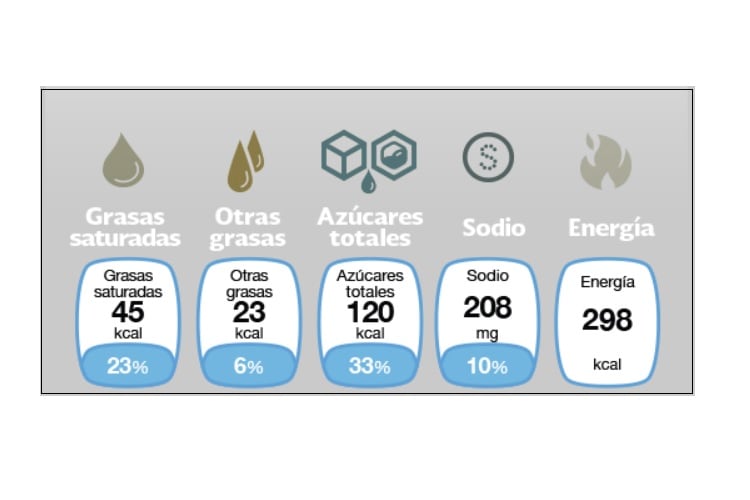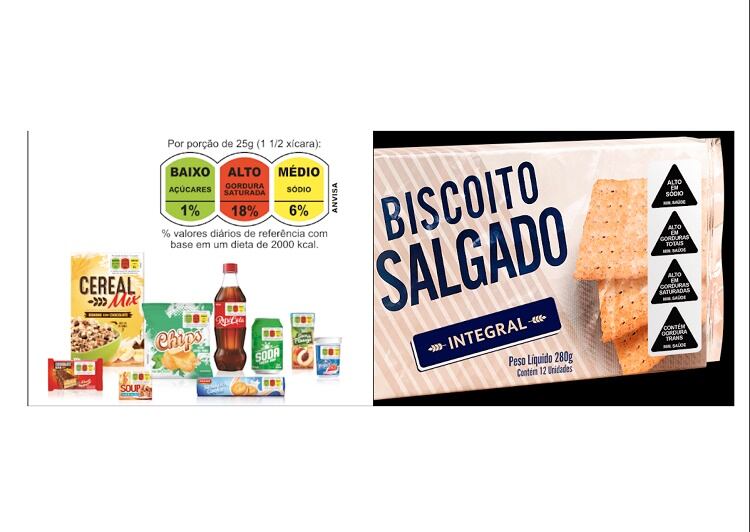Writing in Salud Publica de México, a group of researchers formed by the National Institute of Public Health following a request from Mexico's Ministry of Health put together their position paper on front-of-pack (FOP) labeling to help form future developments and guidance.
Currently, Mexico used the System of Frontal Labeling of Food and Beverages (SEFAB) for its food and beverage nutrition labeling and had done since 2015, under the country's wider national policies on Food Health and Prevention and Control of Overweight, Obesity and Diabetes. Based on the European model, SEFAB displayed saturated fats, other fats, total sugars, sodium and energy in kilocalories front-of-pack per the total contents of the container and per portion. The label also indicated percentages based on the Guideline Daily Amount (GDA) for each component.
However, the committee said: “The available results of research carried out in Mexico and in other countries make it clear that people have difficulties understanding the current [system] and that a simpler form of labeling would be preferable to quickly evaluate the quality of a product.”
For Mexico, they concluded the best option would be a warning label for critical ingredients similar to the system used in Chile. This warning system featured triangular black labels on products high in sugar, sodium, total fats, saturated fats or trans fats.
The position to use warning labels, they said, was consistent with international efforts; based on the best available knowledge; took into account the recommendations of the Pan American Health Organization (PAHO) and the United Nations Children's Fund (UNICEF); and was supported by more than 11 national and international professional health organizations, including the World Heart Federation, InterAmerican Heart Foundation and World Obesity Federation.
Why the 'warning label' option?
The committee said there were a number of clear reasons the warning label was the best option for Mexico. Firstly, they said it had the “best scientific evidence on its ease of understanding”, particularly among Mexicans and children; it was also “simpler” and therefore allowed decision-making in a few seconds; evidence showed it contributed to healthier choices but also the speedy reformulation of unhealthy products; and it was also the preferred system of the PAHO.
With 70% of all adult deaths in Mexico related to chronic non-communicable diseases (NCDs), the researchers said it was vital diet – the “modifiable factor” – was controlled. Currently, 58% of total energy consumed by Mexicans now came from processed foods with ultra-processed foods like sugary drinks, snacks and sweets contributing to 30% of total energy.
Research evaluating how useful the current SEFAB system was in sparking change had been“disappointing”, the researchers said.
An evaluation conducted by the National Institute of Public Health (INSP), for example, found that even university nutrition students “had great difficulty interpreting the data contained in the labels”. Assessments led by the United Nations Children's Fund (UNICEF) in collaboration with various Latin American countries also found GDA labels were difficult to be “adequately understood” by many.
“Such results have also been described in other similar evaluations conducted in developed countries, which suggests that even after improving the educational level of the population, this system is very limited to guide consumption decisions of the general population in our country,” the committee wrote.
Protection from 'commercial interests'

Current GDAs used in Mexico's FOP system were also irrelevant in many instances and had been designed without the participation of nutrition experts free from conflict of interest. For any future FOP label development, it was therefore vital a group “free of conflicts of interest” designed it, because in Mexico it was, and had been, common to have participation from corporations in health decision-making, through their chambers, guilds, interest groups and organizations of the civil society they financed.
“WHO has recognized this as a problem that needs to be addressed. In fact, it recently published guidelines in this regard. Therefore, it is urgent that measures be taken to protect critical health decisions from influences of commercial interests, in accordance with WHO guidelines,” the committee wrote.
Suggestions for inclusion of other ingredients like vitamins, fibers and nutrients in FOP labels must also be ignored, they said. “Given the importance of simplifying the system and making it easy for the population to understand, we consider it fundamental to keep only the emphasis on the components that the World Health Organization recommends paying attention to.”
In addition, the FOP label must be put into a wider social context, with rules on advertising to children and product availability in schools aligned and harmonized, they said.
Mercosur debates FOP labels too
The Mercosur region is also in the midst of debating the best way forward for its FOP label policy. FoodNavigator-LATAM recently reported on Brazil's current stance: with industry fighting for a traffic light system, similar to the UK, and the Brazilian Institute of Consumer Protection (IDEC) fighting for 'warning labels', similar to Chile.
The Brazilian Health Regulatory Agency (ANVISA) is currently reviewing both proposals and is likely to make a decision by the end of this year. The final decision will lead to a compulsory nutrition label policy roll out across the entire Mercosur region (Brazil, Argentina, Paraguay and Uruguay).
Source: Salud Publica de México
Published online ahead of print, doi: 10.21149/9615
“Sistema de etiquetado frontal de alimentos y bebidas para México: una estrategia para la toma de decisiones aludables”
Authors: M. Kaufer-Horwitz et al.


